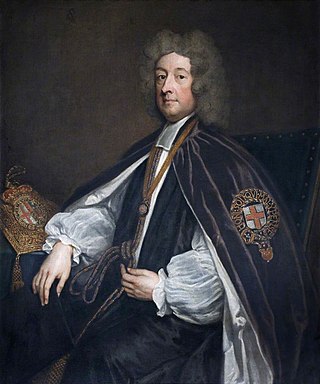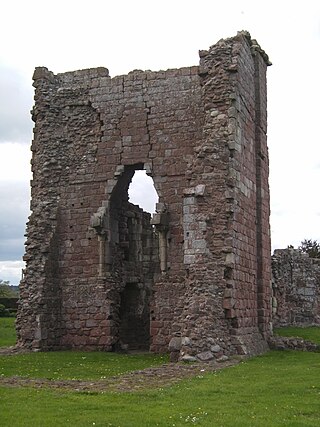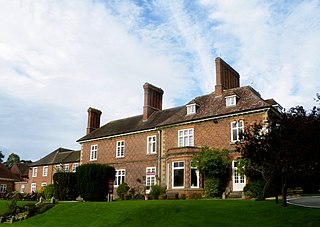


Sir John Talbot (c. 1485 - 22 October 1542 or 10 September 1549) of Pepperhill, Boningale, Shropshire, [1] was an English knight and lord of the manors of Albrighton, Shropshire, and Grafton, Worcestershire.



Sir John Talbot (c. 1485 - 22 October 1542 or 10 September 1549) of Pepperhill, Boningale, Shropshire, [1] was an English knight and lord of the manors of Albrighton, Shropshire, and Grafton, Worcestershire.
He was a son of Sir Gilbert Talbot (1452–1517/18), KG, of Grafton, the only child of his father's second marriage to Etheldreda/Audrey Cotton, a daughter of William Landwade Cotton of Landwade, Cambridgeshire.
Sir John Talbot married twice:
Firstly to Margaret Troutbeck, a daughter of Adam Troutbeck of Mobberley, Chester, by whom he had three sons and five daughters, including:

Secondly he married Elizabeth Wrottesley (died 10 May 1558), a daughter of Walter Wrottesley (died 1563) of Wrottesley Hall, Staffordshire by his wife Elizabeth Harcourt. They had four sons and four daughters, including:
He and his wives Margaret Troutbeck and Elizabeth Wrottesley are buried in St John the Baptist Church, Bromsgrove, Worcestershire, where survives their effigies.

William Talbot was an English Anglican bishop. He was Bishop of Oxford from 1699 to 1715, Bishop of Salisbury from 1715 to 1722 and Bishop of Durham from 1722 to 1730.

John Talbot, 2nd Earl of Shrewsbury, 2nd Earl of Waterford, 8th Baron Talbot, KG was an English nobleman and soldier. He was the son of John Talbot, 1st Earl of Shrewsbury, 1st Earl of Waterford, 7th Baron Talbot, 10th Baron Strange of Blackmere, and Maud Neville, 6th Baroness Furnivall.
George Talbot, 9th Earl of Shrewsbury, 9th Earl of Waterford, was the son of Sir John Talbot of Grafton in Worcestershire, who was a prominent Roman Catholic, frequently fined or imprisoned on account of his faith.
Sir Richard Gardiner was, in 1478, elected Lord Mayor of London. He was Alderman of Walbrook Ward, and had been Sheriff of the City of London in 1469. He was also elected in 1478 a Member of Parliament for the City of London, one of the two aldermanic representatives of the city.
John Talbot, 10th Earl of Shrewsbury, 10th Earl of Waterford, was an English nobleman.
George Neville, 1st Baron Latimer or (Latymer) was an English nobleman.

Sir John Talbot of Grafton, Worcestershire was a prominent recusant English Catholic layman of the reigns of Elizabeth I of England and James I of England. He was connected by marriage to one of the Gunpowder Plot conspirators, and by acquaintance or family ties to other important Catholic figures. He fell often under suspicion from the English government.
The Vernon family was a wealthy, prolific and widespread English family with 11th-century origins in Vernon, Normandy, France. Their extant titles include Baron Vernon and Vernon baronets of Shotwick Park.

Sir Gilbert Talbot of Grafton, KG, was an English Tudor knight, a younger son of John Talbot, 2nd Earl of Shrewsbury and 2nd Earl of Waterford, and Elizabeth Butler.

Grafton Manor was established before the Norman Conquest. Grafton means "settlement at or near the wood" and may indicate a role in woodland management within a larger estate, for instance.
Sir John Pakington, was Chirographer of the Court of Common Pleas, a Member of Parliament for Gloucester, and Sheriff of Herefordshire and Worcestershire. In 1529 he received an extraordinary grant from Henry VIII permitting him to wear his hat in the King's presence.

Sir Thomas Leighton was an English soldier and politician. He served as the Governor of Guernsey and Jersey from 1570 to 1609.

Sir John Talbot was an English politician, soldier, and landowner, who was Member of Parliament for various seats between 1660 and 1685. He held rank in a number of regiments, although he does not appear to have seen active service.
Sir Walter Aston, DL, JP, of Tixall and Heywood, Staffordshire, was a Knight of the Shire and Sheriff of Staffordshire.
Sir Edward Aston of Tixall, Staffordshire was Sheriff of Staffordshire.

Roger Corbet was an English soldier, politician and landowner. He was a client of Thomas FitzAlan, 12th Earl of Arundel and was implicated in the disorder that accompanied Arundel's rule in Shropshire. He probably fought at the Battle of Agincourt. After the untimely death of his patron, he became a successful municipal politician at Shrewsbury and represented Shrewsbury twice and Shropshire once in the House of Commons of England.
John Darras (c.1355–1408) was an English soldier, politician and landowner, who fought in the Hundred Years' War and against the Glyndŵr Rising. A client of the FitzAlan Earls of Arundel, he served them in war and peace, helping consolidate their domination of his native county of Shropshire. He represented Shropshire twice in the House of Commons of England. He died by his own hand.

Albrighton Hall near Shrewsbury, Shropshire, is a house which is Grade II* listed on the National Heritage List for England. It was built in 1630 for the Ireland family and remained in this family for the next five generations until 1804. It was then the home of several notable people until 1953. In the 1990s it was converted into a hotel.

Sir Walter Wrottesley, 3rd Baronet (c.1659–1712), of Wrottesley Hall, then in Tettenhall, today Perton, in Staffordshire, England.

Elizabeth Wrottesley, Duchess of Grafton (1745–1822) married Augustus FitzRoy, 3rd Duke of Grafton on 24 June 1769 at Woburn Abbey in Bedfordshire, England.